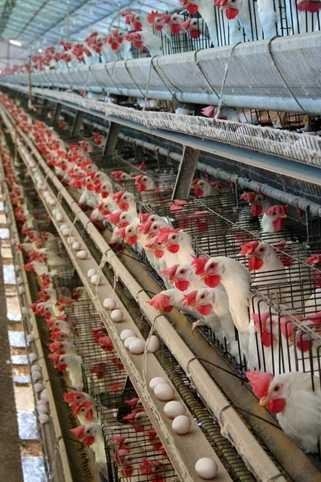1916 to 2018, Broilers, layers and kuroilers: The Journey To More.
The increase in human population led to increase in demand for food, this equally gave reasons to the introduction of improved food and foodstuffs, and this improvement has been and has not stopped.
The necessity for improvement on food led to the improvement of the meat industry, which is a supplier of non plant protein and the improvement of poultry as a whole.
The poultry (meat) industry has experienced tremendously change: From the development of broilers to layers and now, Noilers. The meat industry hasn't stopped evolving every now and then.
Broilers
Breeding based on the performance of ancestors which started in early Twentieth century marked the beginning of improvement of poultry generally.
later on the need for meat type poultry became necessary and this brought about more research into the chance of having a rapidly growing birds within a short period.
The first products or hybrids of these crosses had many inadequacies like slow rate of growth, little tolerance to disease and little fertility rate. Most of these inadequacies, if not all have been corrected in the present day breeds of poultry. Whereby they are different in terms of feed efficiency, conversion rate, weight gain, very rapid growth rate.
Broilers are usually mixed sex but Cockerels, which are also broilers are male chicken raised for meat. Their major differences are the faster growth seen in mixed sex broilers and the opposite in cockerels. This is as a result of the continuous improvement on the genetic components of broilers.
Also, cockerel are cheaper to raise because of cheaper feeding, low cost of establishment and low disease susceptibility but they both serve the same purpose(raised for meat).
Layers
An egg producing breed of birds were developed to operate at the commercial level which is generally called layer birds. This development didn't come after that of broilers, it was done concurrently. whereby men sought to rear birds for eggs, mainly for their homes and the leftovers were sold.
As time went by, the demand for egg surpassed the supply. This was how the journey to the present day commercial layers began.
Farmers sought out ways of getting better eggs, reduced pecking and cannibalism, housing challenges as roaming the field led to theft, death and inaccurate record keeping. Proper management of diseases equally gave a concern, as the population became higher the spread of diseases became rampant.
Breeding by selecting the healthiest and strongest parents and offspring gave a positive result and the development of drugs arising from thorough research helped improved the birds, but this was still not meeting the human population needs.
Towards the end of the twentieth century, rearing of birds indoor became rampant and the use of deep litter and battery cages came into existence.

Author:Secretaria de Agricultura e Abastecimento do Estado de São Paulo Agriculturasp. Wikipedia CCA 2.0
Although, these resulted into more waste accumulation in the deep litter system resulting to high concentration of ammonia which is harmful, proper sanitation became a challenge but cage system seems to answer the question better.
Today, Egg production has increased greatly because of proper feeding and equal access to feed, proper sanitation, mechanized equipments, conveyor belt to aid egg collection and a reduced cost of labour.
When these birds stop laying, they are sold off to the meat industry.
Kuroilers
An Indian named Vinod Kapur produced the first kuroilers in his farm and named it kuroiler. Kuroilers are hybrid from cock (White Leghorn) and a hen (Rhode Island Red).
Kuroilers were produced to enhance the financial income of rural dwellers while increasing their protein consumption. This is a dual purpose bird which can serve as both meat and egg producer. It has a high survival rate that is equivalent to those of the local breeds. It is found to be economical in raising kuroilers which can live off waste and through these waste it can boost its egg production rate from forty eggs per year to 200 eggs in a year because they do not brood.
This breed of birds can be said to be a blend of great traits, produces more meat when compared with the local breeds. The cock can have at 12weeks an average weight of 3.5kg while the hen can grow as 2.5kg on the average, reason being that they consume so much and grow so well.
Kuroilers thrive in all climates because it is hardy and heat tolerant. Having a medium egg size and egg productivity, easier to raise and manage. They reach market weight at 4months, they have higher resistance to disease than broilers and have colourful feathers if you love to have a colourful flock.
With all these improvements and advances in increasing animal protein availability and affordability, it has given great results but like everything else, there is always room for improvement.
Reference
https://www.thehappychickencoop.com/a-history-of-chickens/
https://www.nairaland.com/4502252/u-afraid-loss-poultry-biz
https://www.livestocking.net/kuroiler-chicken-breed-key-facts-features
https://www.dailytrust.com.ng/amo-noiler-the-chick-breed-that-excites-poultry-farmers.html
http://www.agrikhub.com/all-you-need-to-know-about-noilers/
https://en.m.wikipedia.org/wiki/Poultry_farming
https://www.aeb.org/farmers-and-marketers/history-of-egg-production

This post has been voted on by the SteemSTEM curation team and voting trail.
If you appreciate the work we are doing then consider voting us for witness by selecting stem.witness!
For additional information please join us on the SteemSTEM discord and to get to know the rest of the community!
Congratulations @btoye! You have completed the following achievement on the Steem blockchain and have been rewarded with new badge(s) :
Click here to view your Board of Honor
If you no longer want to receive notifications, reply to this comment with the word
STOPDo not miss the last post from @steemitboard:
Congratulations @btoye! You received a personal award!
You can view your badges on your Steem Board and compare to others on the Steem Ranking
Vote for @Steemitboard as a witness to get one more award and increased upvotes!